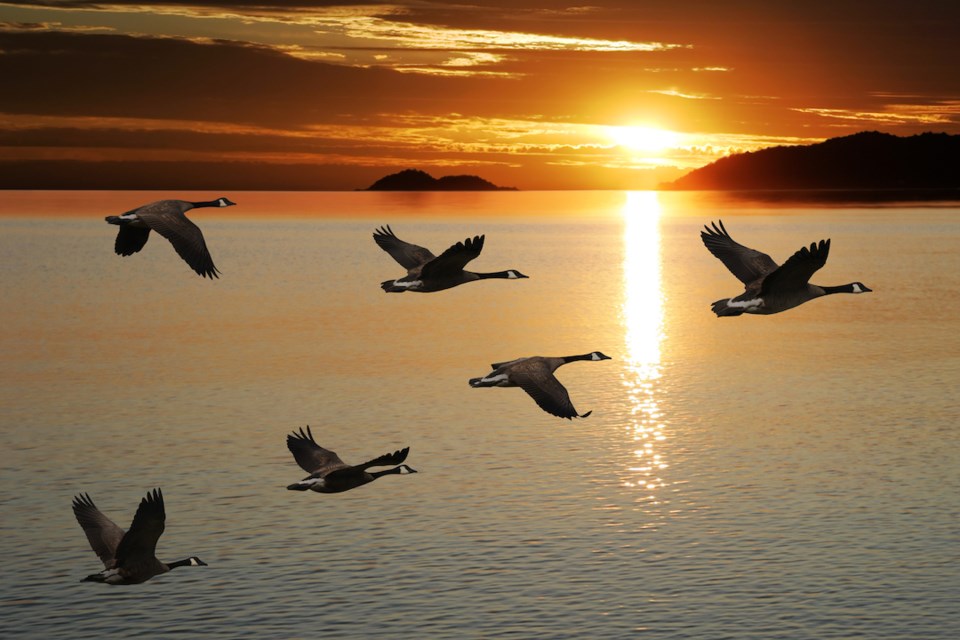The spring and fall migratory flights of wild geese are an iconic event around the entire northern hemisphere, and even non-naturalists are generally aware of the significance when the ‘’goose music’’ is heard overhead. As a child on the east coast of England, I was prompted to the awesome significance of the goose music as flocks of white-fronted, pink-footed and brent geese flew overhead in their thousands, harbingers of winter arriving from Scandinavia and Russia. Now, on the other side of the world, I observe the Canada geese and snow geese making the same seasonal flight as winter begins to grip Siberia, Alaska, Yukon and NWT. Geese flocks will be overflying the Sunshine Coast, day and night, during October. During November, swans, mainly trumpeters, will replace the geese, but the numbers are only a fraction of the goose movement.
Meanwhile, in the mountains behind the Sunshine Coast, the raptors are on the move southward. Raptors, being both lazy and smart, utilize the thermal uplift generated as warm air rises over mountain ridges, to assist in their migration. Local birders have learned that the best location to observe the migration is from the regenerating clearcuts at the 8 Km point on the road to Dakota Ridge. When meteorological conditions are right (usually sunny days after the passage of a front), impressive numbers of raptors can be observed as they circle high above. Fourteen species of raptors have been recorded here including vultures, eagles, osprey, accipiters, buteos and falcons. This year, to date, the high numbers have been 22 red-tailed hawks on Oct. 5 and 34 sharp-shinned hawks on the 6th (these totals during a three-four hour period midday). On Oct. 1, Arnold Skei added a new species to the list when he photographed a broad-winged hawk circling overhead. This species was recorded only once previously on the Coast but it is increasing in B.C. generally.
On Oct. 8, Mari Petznek and Arnold Skei both photographed a brown pelican at Mission Point. This species is a rare but regular visitor to the Salish Sea, generally from late summer to early winter. It is always a highlight to see a pelican in our area.
John Hodges is the hardest working birder on the Sunshine Coast and on Sept. 27, John recorded his 200th species for the year when he located a mourning dove at Gospel Rock. Congratulations John…and onward to 210!
In my last column I commented on the estimated four billion birds that cross the Canada-USA border during the fall migration. Depressing pictures just surfaced of the mortality during a single night as more than a thousand dead birds were collected from the vicinity of one Chicago building.
To report your sightings or questions contact [email protected] or 604-885-5539. Good Birding.





